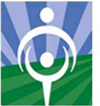
 |  |  |
| Animal movement kicks and bites can cause injury |
Weight of feed can strain muscles |
Moving parts of conveyor can entangle fingers, hands, hair and clothing |
 |  |  | Good handwashing |
Steel-toed shoes with non-skid soles | Respirator as needed |
Is the child comfortable around large animals?
Yes.
No. STOP! Children who are uncomfortable around animals are more likely to be injured.
Does the feed the child will lift weigh less than 10-15% of the child's body weight?
Yes.
No. STOP! Children lifting more than 15% of their body weight are more likely to injure their backs.
Can the child easily push up to 10-15% of his or her body weight?
Yes.
No. STOP! Children who have to strain to push heavy objects are more likely to injure their backs.
If a cart is used for the conveyor system, can the child maneuver it? For example, can the child move a grocery cart through the store?
Yes.
No. STOP! Children who can't handle the cart are more likely to be injured.
Does the child have good peripheral vision? For example, while looking straight ahead, can the child see our finger entering his or her field of vision at shoulder level?
Yes.
No. STOP! Children with limited vision may not see dangers in the work area.
Can the child react quickly?
Yes.
No. STOP! Because cattle behave unpredictably, children need quick reactions to avoid injury.
Can the child recognize a hazard and solve the problem without getting upset?
Yes.
No. STOP! Children must be able to recognize hazards, think about how to respond, and stay calm to prevent injury.
Does the child usually go with his or her "gut" feeling without thinking too much about what could happen next?
Yes. CAUTION! Children who act on impulse need close supervision.
No.
Is your child responsible? Do you trust your child to do what's expected without anyone checking?
Yes.
No. CAUTION! Children who behave irresponsibly need close supervision.
Has the child been trained on animal behavior?
Yes.
No. STOP! Children who don't understand animal behavior are more likely to be injured.
Has the child been trained on lifting techniques?
Yes.
No. STOP! Lifting incorrectly can cauuse back injury.
Has an adult demonstrated working with large animals on site?
Yes.
No. STOP! Children learn best when shown how to do the job at the worksite.
Has the child shown he or she can do the job safely 4 to 5 times under close supervision?
Yes.
No. CAUTION! An adult must watch constantly until the child shows he or she can do the job.
Can an adult supervise as recommended?
Yes.
No. STOP! The right level of supervision is key to preventing injuries.
What's the right amount? Here are suggestions- but remember, it depends on the child.
Age 12-13: WATCH nearly constantly.
Age 14-15: CHECK every few minutes at first. When the child shows he or she can do the job, LEAVE for 15 to 30 minutes.
Age 14-15: WATCH nearly constantly.
Age 16+: CHECK every few minutes.
Age 14-15: WATCH constantly at first. When the child shows he or she can do the job, CHECK every few minutes.
Age 16+: CHECK every few minutes at first. When the child shows he or she can do the job, LEAVE for 15 to 30 minutes.

North American Guidelines
for Children's Agricultural Tasks (NAGCAT)
For more information, visit: http://www.nagcat.org

National Children's Center for Rural and Agricultural Health and Safety Marshfield Clinic
1000 North Oak Avenue
Marshfield, WI 54449-5790
Phone: 1-800-662-6900 or 715-389-4999
Fax: 715-389-4996

National Farm Medicine Center
Marshfield Clinic
1000 North Oak Avenue
Marshfield, WI 54449-5790
Phone: 1.800.662.6900 or 715.389.4999
Fax: 715.389.3535
Disclaimer and Reproduction Information: Information in NASD does not represent NIOSH policy. Information included in NASD appears by permission of the author and/or copyright holder. More